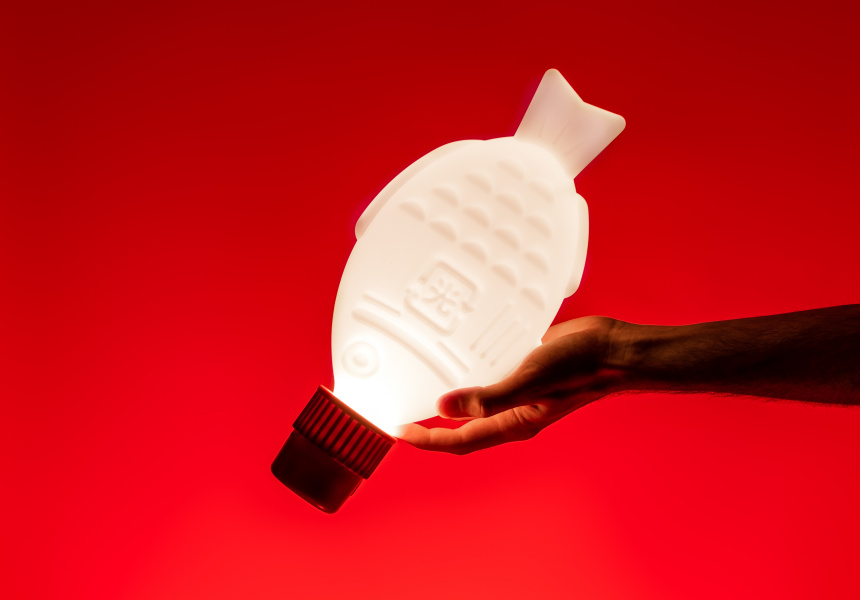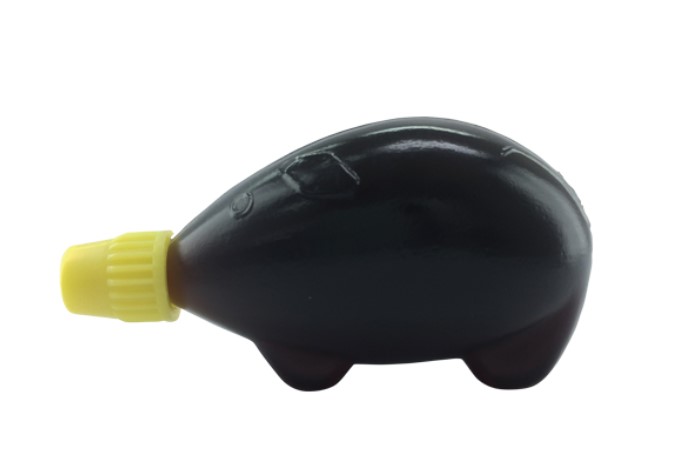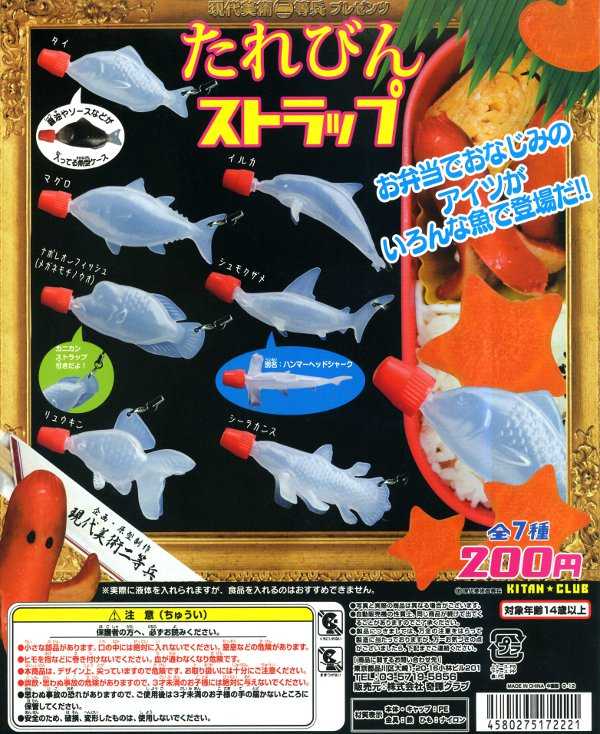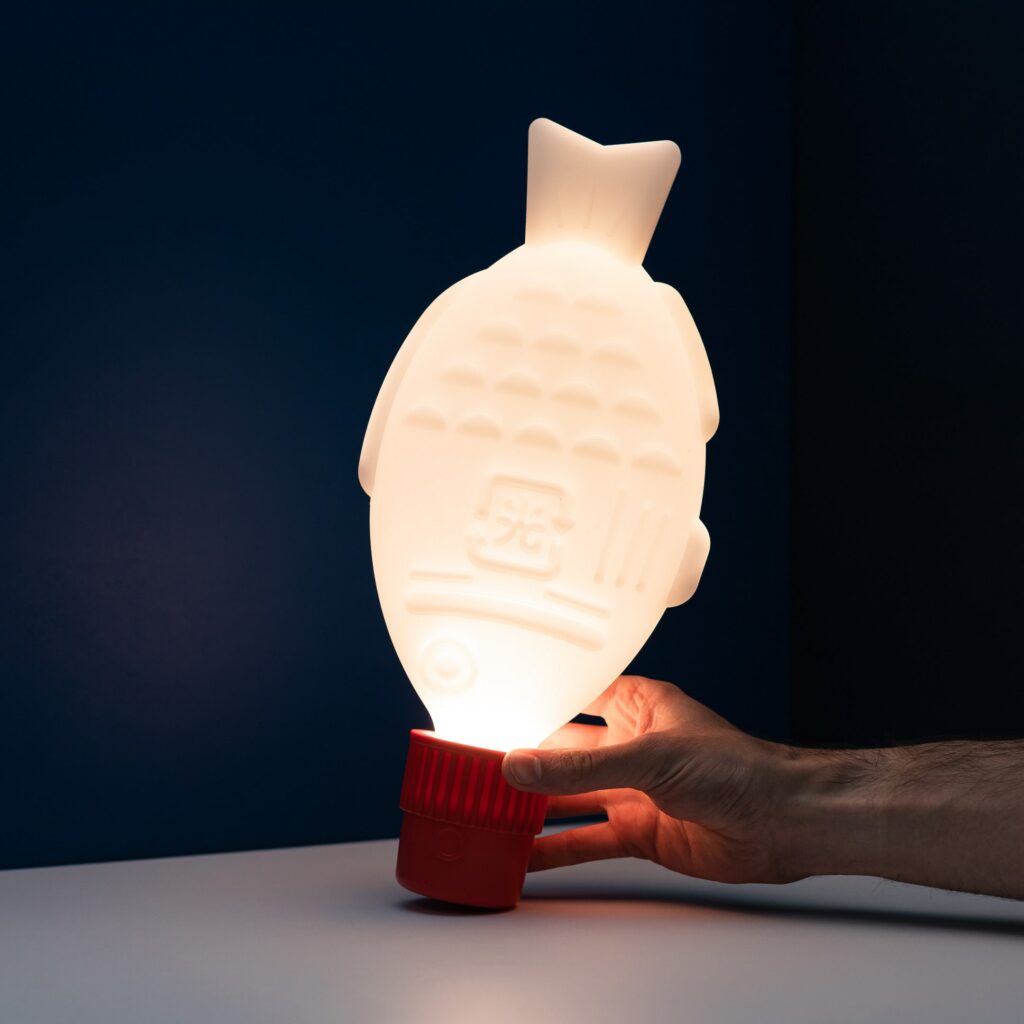
If you’re Australian, you know those cute fish-shaped bottles of soy sauce you get with your salmon sushi roll– red cap, white bottle, maybe you even use the tail as a scoop for the wasabi. Google says that they were invented in 2008 by “Little Soya” in the US, but that’s a smokescreen. In fact, most Americans have never even seen this iconic design. The truth is these plastic pisces were born in 1950s Osaka, Japan, and there’s a lot more to them than you might think.
They were born out of post war scarcity– the original ceramic and glass containers were expensive and dangerous to discard. Teruo Watanabe, the founder of manufacturer Asahi Sogyo, led the jump to the plastic soy sauce packets– which they call “lunch charms”– and later the jump to fish-shaped ones. The inspiration was simple enough. Since people used them with sushi and sashimi, they made them look like the food they’re paired with– and for pork cutlets, you can get pig-shaped ones.

The fish’s shape itself isn’t a generic choice either. It’s not ‘just a fish’, it’s a bream. Watanabe has said they chose it because the bream is a “high-class fish,” “the king of fish,” that it has a “lovely rounded shape,” and “it’s auspicious.” Now, “the king of fish” might be a tad generous, you’d be hard pressed to find an Aussie fisherman who doesn’t love a good bream, which might account for part of its popularity in Oz. And because it’s a bream, the Japanese also call them shoyu-tai, “soy sauce bream”.
Since the invention of these minor marvels, it’s become a cultural icon for Japan– not to mention the world– and has spawned all sorts of variants and merchandise. There are golden bottles for special occasions– maybe you want to impress your company’s clients with something truly auspicious. There were blue tops for disinfectant bottles during covid. You can buy t-shirts, water bottles, plushies, and there’s even a collection of gacha prizes to win– like a hammerhead shark shoyu-tai.

But despite this little fish’s popularity, its ubiquity means that they’re a single-use plastic pest. The sad truth is that, like the glass and ceramic soy sauce bottles of pre-war Japan, soy sauce fish need to go the way of the samurai. They’re difficult to recycle, take hundreds of years to break down, and are killing other, real fish. It’s an issue that Asahi Sogyo themselves are grappling with, and sooner or later a eco-friendly variant will appear.
In fact, Australia design duo Heliograf have come up with a clever way for you to enjoy the iconic design while helping to clean up the ocean. Their Light Soy lamp is a giant version of the beloved fish, and each purchase pays for 2kg of plastic clean up. It’s a solution so charming that even The New Yorker has featured it, but because real shoyu-tai are so hard to recycle, their use is still a pollution problem.

Thankfully, other Australian designers are tackling the issue at its source too. Biopak is an Australian manufacturer that sells a sustainable, biodegradable plastic born from vegetable starches. It’s almost indistinguishable from traditional plastic, and has already been adopted by companies like Australia’s Doordash, Seven Eleven, and McDonalds. If shoyu-tai are to make the jump to sustainability, Biopak’s PLA Bioplastic may be the solution. The main thing stopping manufacturers like Asahi Sogyo from making the jump are the prices, but as more companies adopt the material, competition will drive the price down.
Until then, you might like to go easy on the soy sauce. After all, they look better decorating your room (as a lamp or art piece) than decorating the beach. So skip the single use plastic and opt for a soy sauce bottle of your own, go sauceless, or make a pair of earrings out of them instead– the soy sauce bream might not thank you, but the Australian bream will.
And if you’d like to help fight plastic pollution, you can donate to charities like Cleanup Australia, The Ocean Cleanup. You can adopt eco-friendly solutions at your workplace, such as using glass soy sauce bottles or recyclable packaging. And if you’d like to aid Light Soy’s Aussie designers, you can try their latest innovation Qubio, a malleable content stack site like Linktree.
